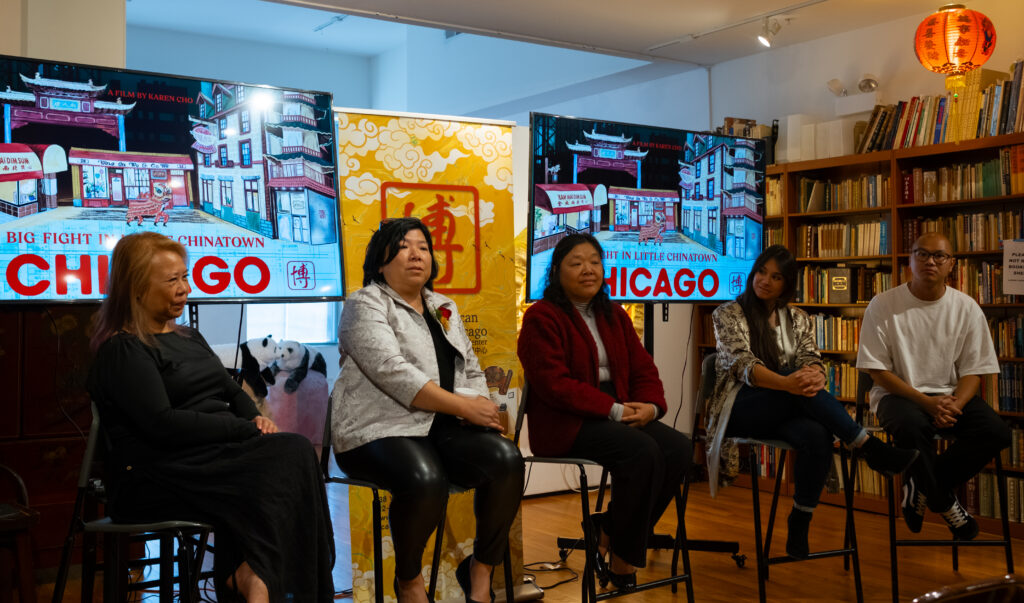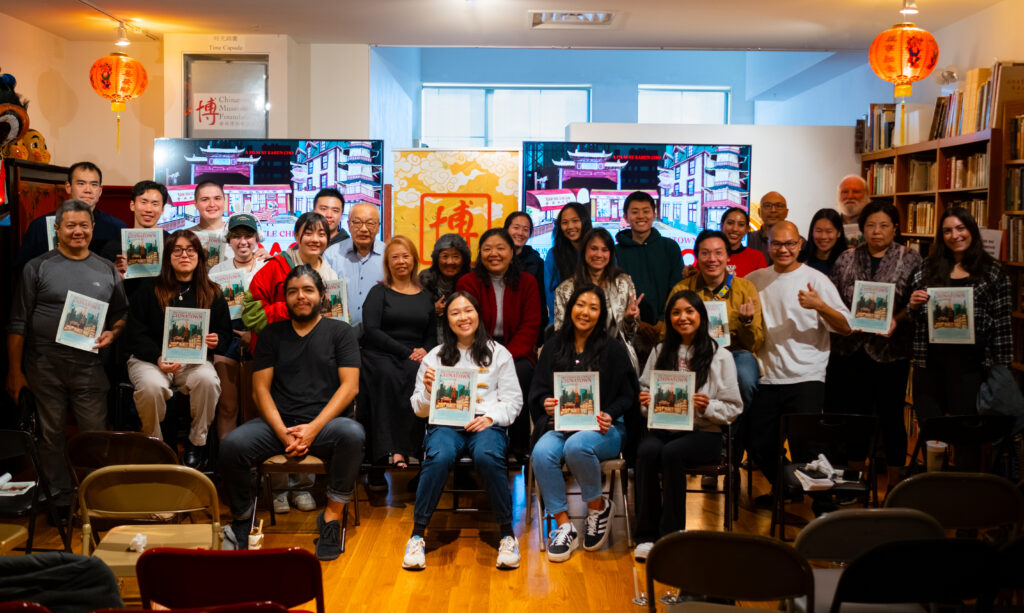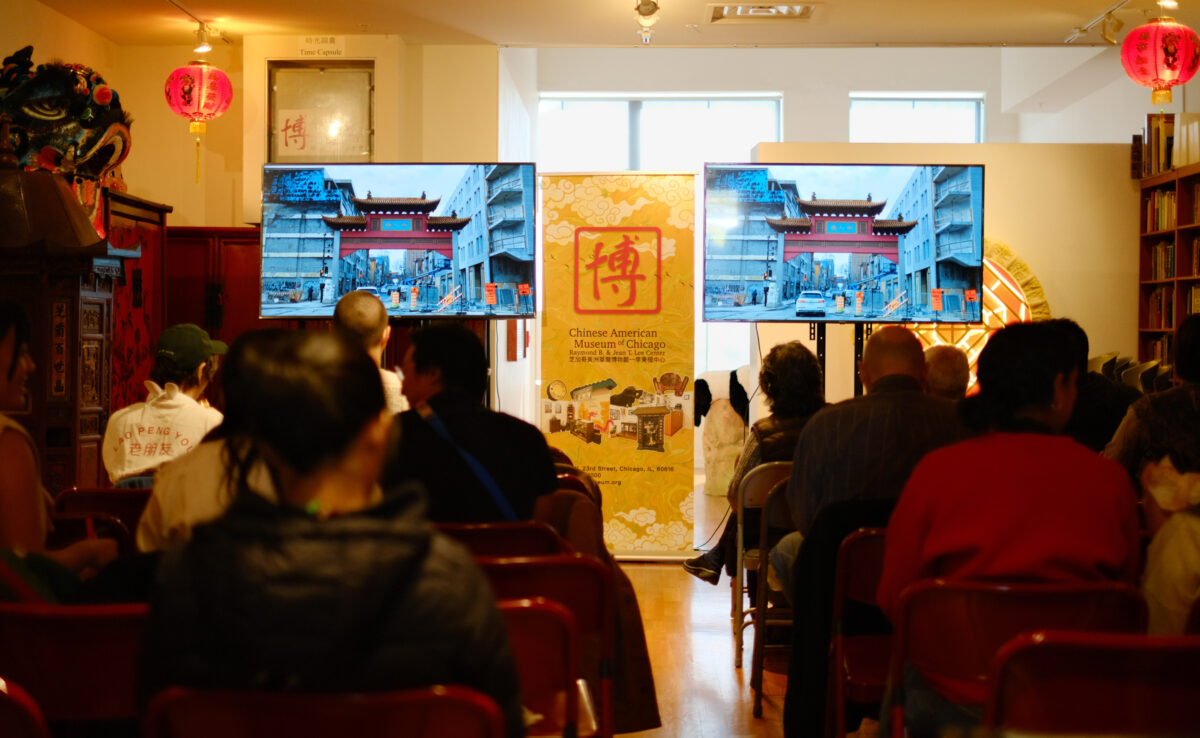In North America, Chinatowns are disappearing. Urban development, shrinking populations, and pandemic-induced racism all endanger the existence of these historic immigrant enclaves.
The plight of these communities is at the center of the documentary, Big Fight in Little Chinatown, screened at the Chinese American Museum of Chicago last Saturday. The feature film traces the hardships experienced by five different Chinatowns in the U.S. and Canada in recent years, shedding light on how residents strive to safeguard their heritage and confront existential threats. The screening was followed by a panel discussion between the filmmaker Karen Cho and the museum’s interim executive director Mabel Menard, the executive director of Coalition for Better Chinese American Community, Grace Chan McKibben, and 11th Ward Alderperson, Nicole Lee.

The film draws parallels between multiple Chinatowns to highlight the inherent racism in urban planning, and how residents have organized to protect their communities in the past few years. In New York in 2022 demonstrators gathered to oppose the construction of the world’s tallest jail in their residential neighborhood. In Montreal, organizers have advocated for heritage status to safeguard key structures, such as the city Chinatown’s historic core, from real estate developers. Meanwhile, in Toronto, residents mobilized to prevent the establishment of large retail chains that threaten the existing mom-and-pop shops on their blocks. Each community employed distinct organizing strategies to preserve their respective neighborhoods while grappling with slowing business and anti-Asian hate crimes.
According to the film, Chinese immigrants in North American cities often built Chinatowns on the outskirts of the downtown where people initially were unwilling to live. Over the years, as the downtown areas expanded, policy makers and real estate developers lay their eyes on Chinatowns, treating these neighborhoods as disposable.
Cho, a filmmaker based in Montreal, said Chinatowns often become sites for constructions that local residents do not want because politicians perceive Chinatowns as “the neighborhood of least resistance.” Historical disenfranchisement of Asian-Americans and Asian-Canadians has often made it challenging for Chinatown residents to have their voice heard.
Her first film, In the Shadow of Gold Mountain, tells the stories of the survivors of the Chinese Head Tax and Exclusion Act in Canada, which imposed a heavy head tax on Chinese immigrants from 1885 to 1923 and later banned Chinese immigration completely from 1923 to 1947. It was shot approximately twenty years ago in the Chinatowns of Vancouver and Montreal, where Cho’s father’s side of the family grew up.
Twenty years later, Cho, saddened by the state of decline in the Chinatowns, decided to revisit them for another documentary. Cho said she felt obliged to make this movie to draw more attention to the challenges facing the immigrant enclaves.
She has been using her tour as an impact campaign, inviting local organizers at each screening event to connect the movie to local issues.
Cho said that policy makers often prioritize the needs of the tourists over that of the Chinatown residents, making the neighborhoods less sustainable. According to Cho, the Canadian government suggested refurbishing benches in Chinatown with red paint instead of implementing substantial policies to benefit business owners. They think of Chinatown as a foreign and tourist place “like Disneyland,” Cho said.
“The act of telling your story is an act of rebellion,” Cho said. “To insert yourself into the mainstream narrative of America… and write yourself into a future of a neighborhood is… the ability to have the audacity to fight for your rights.”
Alderperson Lee, whose district includes Chinatown, said she feels fortunate that Chicago Chinatown—often known as the only growing Chinatown in North America—is still vibrant. She recalled that when she grew up here, the residents were all from the same southern region of China. Now, the population has expanded and become more diverse, as reflected in various regional cuisines available in the restaurants.
Ald. Lee said Chicago Chinatown can thrive today thanks to the work of previous generations. From the mid to late 20th century, Chinatown was restrained from expansive development, bounded by the Chicago River, Dan Ryan Expressway, and railroads. Community organizers waged a hard fight, constructing new malls and recreational space on land previously owned by the Santa Fe Railways, so that Chicago Chinatown was eventually able to expand.

McKibben, CBCAC’s executive director, said another reason Chicago Chinatown was spared from immediate threats of displacement is that the community had already been displaced before. Chicago’s first Chinatown was initially established on Clark Street near the city’s downtown. But in 1912, Chinatown moved south to its current location on Cermak Road. McKibben said that had Chinatown stayed in its former location on Clark Street, it’s very likely that the same would happen: Chinese residents would be displaced given the current real estate value of the downtown area.
McKibben added that there are many hidden threats underlying Chicago Chinatown. Many residents have been complaining about rising rents and rising property taxes in the district—the third-highest property tax increases across all the wards. In the north of Chinatown, developers are building The 78—a residential compound so large that the developers tout it as Chicago’s unofficial 78th neighborhood.
“One of the dangers of gentrification is that… you don’t know that you’re gentrified until after you’ve been gentrified,” McKibben said. “Thinking proactively about how we plan for this community so that we can still be here… is really important.”
Alderperson Lee echoed the sentiment. She emphasized that the same pressure facing other Chinatowns could also take place in Chicago if community leaders don’t plan ahead and be intentional about what kind of development projects they bring into the neighborhood.
“We’ve got to be vigilant and thoughtful about how things develop and what we want to bring in and what sort of future we want for our community,” she said.
Xuandi Wang is a journalist and policy researcher. His writing on urban affairs and environmental governance has appeared in Block Club Chicago, Chicago Reader, In These Times, and more.



